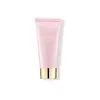What's inside
What's inside
 Key Ingredients
Key Ingredients

 Benefits
Benefits

 Concerns
Concerns

No concerns
 Ingredients Side-by-side
Ingredients Side-by-side

Water
Skin ConditioningButylene Glycol
HumectantDimethicone
EmollientGlycerin
Humectant1,2-Hexanediol
Skin ConditioningVinyldimethicone
C15-19 Alkane
SolventHydroxypropyl Starch Phosphate
Sodium Polyacrylate
AbsorbentCaprylic/Capric Triglyceride
MaskingHydroxyethyl Acrylate/Sodium Acryloyldimethyl Taurate Copolymer
Emulsion StabilisingAcrylates/C10-30 Alkyl Acrylate Crosspolymer
Emulsion StabilisingDimethicone Crosspolymer
Emulsion StabilisingCeramide NP
Skin ConditioningHydrogenated Lecithin
EmulsifyingDisodium EDTA
Clitoria Ternatea Flower Extract
Skin ConditioningCaprylyl Glycol
EmollientAcetyl Hexapeptide-8
HumectantVaccinium Macrocarpon Seed Oil
Skin ConditioningWater, Butylene Glycol, Dimethicone, Glycerin, 1,2-Hexanediol, Vinyldimethicone, C15-19 Alkane, Hydroxypropyl Starch Phosphate, Sodium Polyacrylate, Caprylic/Capric Triglyceride, Hydroxyethyl Acrylate/Sodium Acryloyldimethyl Taurate Copolymer, Acrylates/C10-30 Alkyl Acrylate Crosspolymer, Dimethicone Crosspolymer, Ceramide NP, Hydrogenated Lecithin, Disodium EDTA, Clitoria Ternatea Flower Extract, Caprylyl Glycol, Acetyl Hexapeptide-8, Vaccinium Macrocarpon Seed Oil
Water
Skin ConditioningPolyurethane-34
Cetyl Ethylhexanoate
EmollientGlycerin
HumectantSwiftlet Nest Extract
Skin ConditioningHydrolyzed Collagen
EmollientHydroxyethyl Acrylate/Sodium Acryloyldimethyl Taurate Copolymer
Emulsion StabilisingTromethamine
BufferingAcrylates/C10-30 Alkyl Acrylate Crosspolymer
Emulsion Stabilising1,2-Hexanediol
Skin ConditioningCaprylyl Glycol
EmollientButylene Glycol
HumectantMethyl Gluceth-20
HumectantTrehalose
HumectantTocopheryl Acetate
AntioxidantAloe Barbadensis Leaf Extract
EmollientMelaleuca Alternifolia Leaf Oil
AntioxidantIllicium Verum Fruit Extract
PerfumingActinidia Chinensis Fruit Extract
EmollientRibes Nigrum Fruit Extract
AstringentHoney Extract
HumectantChamaecyparis Obtusa Water
MaskingPropolis Extract
Skin ConditioningDaemonorops Draco Extract
AstringentGold
Cosmetic ColorantChlorphenesin
AntimicrobialParfum
MaskingWater, Polyurethane-34, Cetyl Ethylhexanoate, Glycerin, Swiftlet Nest Extract, Hydrolyzed Collagen, Hydroxyethyl Acrylate/Sodium Acryloyldimethyl Taurate Copolymer, Tromethamine, Acrylates/C10-30 Alkyl Acrylate Crosspolymer, 1,2-Hexanediol, Caprylyl Glycol, Butylene Glycol, Methyl Gluceth-20, Trehalose, Tocopheryl Acetate, Aloe Barbadensis Leaf Extract, Melaleuca Alternifolia Leaf Oil, Illicium Verum Fruit Extract, Actinidia Chinensis Fruit Extract, Ribes Nigrum Fruit Extract, Honey Extract, Chamaecyparis Obtusa Water, Propolis Extract, Daemonorops Draco Extract, Gold, Chlorphenesin, Parfum
Ingredients Explained
These ingredients are found in both products.
Ingredients higher up in an ingredient list are typically present in a larger amount.
1,2-Hexanediol is a synthetic liquid and another multi-functional powerhouse.
It is a:
- Humectant, drawing moisture into the skin
- Emollient, helping to soften skin
- Solvent, dispersing and stabilizing formulas
- Preservative booster, enhancing the antimicrobial activity of other preservatives
Acrylates/C10-30 Alkyl Acrylate Crosspolymer is a synthetic polymer. It is used to thicken and improve the texture of products. Due to its properties, it can prevent water and oil ingredients from separating.
Butylene Glycol (or BG) is used within cosmetic products for a few different reasons:
Overall, Butylene Glycol is a safe and well-rounded ingredient that works well with other ingredients.
Though this ingredient works well with most skin types, some people with sensitive skin may experience a reaction such as allergic rashes, closed comedones, or itchiness.
Learn more about Butylene GlycolCaprylyl Glycol is a humectant and emollient, meaning it attracts and preserves moisture.
It is a common ingredient in many products, especially those designed to hydrate skin. The primary benefits are retaining moisture, skin softening, and promoting a healthy skin barrier.
Though Caprylyl Glycol is an alcohol derived from fatty acids, it is not the kind that can dry out skin.
This ingredient is also used as a preservative to extend the life of products. It has slight antimicrobial properties.
Learn more about Caprylyl GlycolGlycerin is already naturally found in your skin. It helps moisturize and protect your skin.
A study from 2016 found glycerin to be more effective as a humectant than AHAs and hyaluronic acid.
As a humectant, it helps the skin stay hydrated by pulling moisture to your skin. The low molecular weight of glycerin allows it to pull moisture into the deeper layers of your skin.
Hydrated skin improves your skin barrier; Your skin barrier helps protect against irritants and bacteria.
Glycerin has also been found to have antimicrobial and antiviral properties. Due to these properties, glycerin is often used in wound and burn treatments.
In cosmetics, glycerin is usually derived from plants such as soybean or palm. However, it can also be sourced from animals, such as tallow or animal fat.
This ingredient is organic, colorless, odorless, and non-toxic.
Glycerin is the name for this ingredient in American English. British English uses Glycerol/Glycerine.
Learn more about GlycerinThis is a synthetic polymer. It helps improve the texture of products by adding thickness and gel-like feel.
It is also an emulsifer, meaning it prevents ingredients such as oil and water from separating. It also helps evenly disperse other ingredients.
Water. It's the most common cosmetic ingredient of all. You'll usually see it at the top of ingredient lists, meaning that it makes up the largest part of the product.
So why is it so popular? Water most often acts as a solvent - this means that it helps dissolve other ingredients into the formulation.
You'll also recognize water as that liquid we all need to stay alive. If you see this, drink a glass of water. Stay hydrated!
Learn more about Water